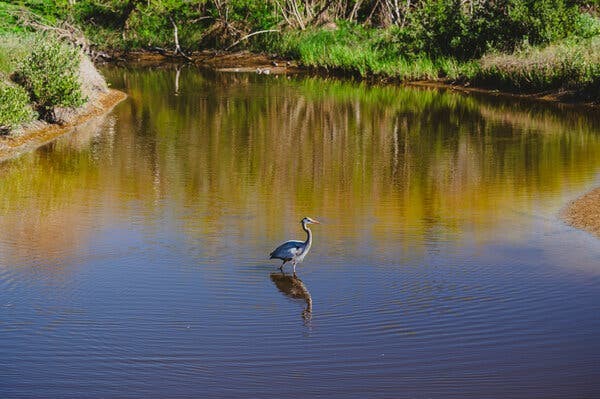By: Eva Li
Elon Musk’s starship, the largest one ever manufactured, blasted successfully toward the sky last month and it was hailed as a giant leap for SpaceX and the United States’ civilian space program. Several hours after the rocket blasted, once the conditions were deemed safe for people to approach it, a team from SpaceX, the U.S. Fish and Wildlife Service, and a conservation group began looking around the fragile migratory bird habitat surrounding the launch site.
The result of the starship’s impact was obvious. The launch had unleashed an enormous burst of mud, stones and fiery debris across the public lands encircling Mr. Musk’s $3 billion space compound. Big chunks of sheet metal and insulation were spread across the sand flats on one side of a state park. Elsewhere, a small fire had ignited so it left a charred patch of park grasslands and remnants from the blastoff that burned 7.5 million pounds of fuel.
Most disturbing to one member of the entourage was the yellow smear on the soil in the same spot that a bird’s nest lay the day before. None of the nine nests recorded before the launch by the nonprofit, Coastal Bend Bays & Estuaries Program, had survived intact.“The nests have all been messed up or have eggs missing,” Justin LeClaire, a Coastal Bend wildlife biologist, told a Fish and Wildlife inspector.
On at least 19 occasions since 2019, SpaceX operations have caused fires, leaks, explosions or other problems associated with the rapid growth of Mr. Musk’s complex in Boca Chica. These incidents have caused environmental damage and reflect a broader debate over how to balance technological and economic progress against protections of delicate ecosystems and local communities. That natural tension is heightened by Mr. Musk’s influence over American space aspirations. Members of Congress and senior officials in the Biden administration have fretted privately and publicly about the extent of Mr. Musk’s power as the U.S. government increasingly relies on SpaceX for commercial space operations and for its plans to travel to the moon and even Mars.
An examination of Mr. Musk’s tactics in South Texas shows how he exploited the limitations and competing missions of the various agencies most poised to be a check on the ferocious expansion of the industrial complex he calls Starbase. Those charged with protecting the area’s cultural and natural resources — particularly officials from the Interior Department’s Fish and Wildlife Service and the National Park Service — repeatedly lost out to more powerful agencies, including the Federal Aviation Administration, whose goals are intertwined with Mr. Musk’s.
Source:
https://www.nytimes.com/2024/07/07/us/politics/spacex-wildlife-texas.html











